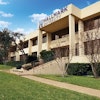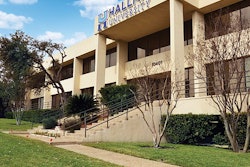ALLENTOWN, Pa. — Electronic medical records have spawned a new health care profession: medical scribe.
Working alongside doctors, scribes enter information into a computer, their fingers furiously typing away so the doctors’ digits don’t have to.
“I feel like it benefits me, but it benefits the patients more,” said Dr. Meena Agarwala of St. Luke’s Northern Valley Primary Care in Hanover Township, Lehigh County. That’s because she spends less time facing a computer screen and more time face-to-face with the individuals in her exam room.
The medical scribe industry exploded after the American Recovery and Reinvestment Act of 2009. The law gave health care providers five years to demonstrate “meaningful use” of electronic medical records in order to maintain their Medicaid and Medicare reimbursement levels.
The file cabinets that had long been a fixture in so many doctor’s offices would soon be obsolete.
Today, some 18,000 people nationally work as medical scribes, according to the American College of Medical Scribe Specialists, a nonprofit in Orange County, Calif. ScribeAmerica, which describes itself as “the most frequently used medical scribe company,” has more than 9,000 employees in 48 states, according to its website.
The use of medical scribes is catching on in the Lehigh Valley as well. Among ScribeAmerica’s clients are St. Luke’s University Health Network and Lehigh Valley Health Network, both of which have recently instituted scribe pilot programs.
Dr. Mark Wendling, the medical director of LVHN’s Valley Preferred practice in South Whitehall Township, began working with scribes about six months ago.
During an examination, he plays the role of color commentator at his own ballgame, describing aloud what he’s doing, seeing, thinking. The scribe, meanwhile, plugs this steady stream of information directly into the patient’s electronic medical record.
“The best thing about the scribe journey for me, aside from not having to type as much, is that my patient gets to hear, pretty much verbatim, my plan,” Wendling said, “This is a level of transparency that is above and beyond.”
With the shift to electronic medical records, the laptop has, arguably, laid claim to the stethoscope’s title as the most important tool of the medical profession.
Doctors are required by government regulations and insurance companies to input varied and detailed information in a patient’s electronic medical records. Typically, this is done in real time, that is, in the exam room, in front of patients.
Of course, some doctors are more comfortable with technology than others, and not all are equally adept at multitasking.
St. Luke’s launched its scribe pilot program about 18 months ago in response to some doctors’ negative feedback about the impact of electronic medical records, said Joe Minahan, vice president of the specialty care division of St. Luke’s Physician Group.
“We have found that it improves productivity slightly,” Minahan said of the use of scribes, though more importantly it has added to doctors’ “quality of life.”
“We figured physician satisfaction would translate to patient satisfaction,” he said.
Such benefits have been documented by research. One study, published in ClinicoEconomics and Outcomes Research in 2013, looked at cardiologists who used scribes. It found that doctor-patient interaction was “significantly improved” by such measures as face-to-face time, which increased by more than five minutes per appointment.
A follow-up study in the same journal last year reported that the cardiologists who used scribes also saw 9.6 percent more patients per hour. That translated into $1.4 million in extra revenue for each cardiologist annually, an enormous profit margin over the $100,000 cost of scribe services.
Some observers, however, are wary of potential pitfalls, including the possibility that doctors will allow scribes to order medications or further treatment without proper oversight. “There is a substantial risk of unintended functional creep, of letting scribes enter verbal orders,” warned an opinion piece in JAMA, the journal of the American Medical Association, in 2014.
Carolynn Harbison, the scribe who works alongside Agarwala, said her ScribeAmerica training left her with a clear understanding of what she cannot do, chiefly, touch, diagnose or prescribe.
A sophomore at DeSales University in Center Valley, Harbison is enrolled in a five-year combined medical studies and physician assistant program. Working as a scribe not only allows her to earn money, but also to log hours that count toward the practical experience she needs to graduate.
“I absolutely love it,” she said. “I feel like I’m learning so much. I’m involved in patient care.”
Typically, Harbison stands before a laptop, facing away from patients. She tries to capture as much of what Agarwala says as possible. She rarely interrupts or otherwise draws attention to herself. Her goal, she said, is to blend into the background.
Though Agarwala has to review and edit Harbison’s notes to ensure their accuracy, the doctor said this is far easier than entering the information herself and having less computer work “cuts down on my irritability at the end of the day.”
ScribeAmerica represents but one of multiple paths to become a medical scribe. The company recruits people such as Harbison who are studying to become nurses, doctors or other medical professionals.
The main drawback of this approach, Agarwala said, is that the scribes tend to be short-timers: A doctor may invest months showing a scribe how to do the job just right only to see the scribe leave for school or a new job.
Both Lehigh Carbon Community College and Northampton Community College have programs that prepare students to work as medical scribes. At LCCC, it’s the two-year medical assistant program through which students earn an associate’s degree.
Because medical assistants can scribe and do hands-on work, such as administer vaccines, their skills are in demand, according to Janet Seggern, an LCCC business professor who teaches the administrative side of medical assisting.
“A lot of physicians didn’t know how much they’d have to interact with the (electronic medical record) software,” she said, “They find it cumbersome.”
Wendling said he isn’t one of those doctors who is technology-averse. He managed the transition to electronic medical records just fine, he said.
Nonetheless, he’s thrilled to have a medical scribe by his side.
“It’s quite joyful,” he said. “The patients know they have much more of my undivided attention.”
















